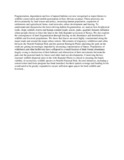Effects of extreme land fragmentation on wildlife and livestock population abundance and distribution

View/
Date
2016-12Author
Said, Mohammed Y
Ogutu, Joseph O
Kifugo, Shem C
Makui, Ogeli
Reid, Robin S
Leeuw, Jan de
Type
ArticleLanguage
enMetadata
Show full item recordAbstract
Fragmentation, degradation and loss of natural habitats are now recognised as major threats to wildlife conservation and mobile pastoralism in East African savannas. These processes are driven primarily by land tenure and policy, increasing human population, expansion of settlements and agricultural farms, road networks, urban development and fencing. To understand and characterise the forces driving habitat fragmentation, we analyse how biophysical (soils, slope, rainfall, rivers) and human-created (roads, towns, parks, quarries) features influence where people choose to fence the land in the Athi-Kaputiei ecosystem of Kenya. We also explore the consequences of land fragmentation through fencing on the abundance and distribution of wildlife and livestock populations. We show that fences are most highly concentrated along the major roads and around the major urban centres. Movements of migratory wildebeest and zebra between the Nairobi National Park and the pastoral Kitengela Plains adjoining the park on the south are getting increasingly impeded by increasing concentration of fences. Populations of wildebeest and other herbivores have collapsed to a small fraction of their former abundance largely owing to destruction of their habitats and obstruction of their movements between the park and the pastoral lands by fences and other land use developments. Conserving the key seasonal wildlife dispersal areas in the Athi-Kaputiei Plains is critical to ensuring the future viability of several key wildlife species in Nairobi National Park. Several initiatives, including a conservation land lease program has been launched, but their spatial coverage and funding levels would need to be greatly expanded to secure sufficient open spaces for both wildlife and livestock.
URI
http://www.sciencedirect.com/science/article/pii/S1617138116301http://hdl.handle.net/11295/97951
Citation
Journal for Nature Conservation Volume 34, December 2016, Pages 151–164Publisher
University of Nairobi
